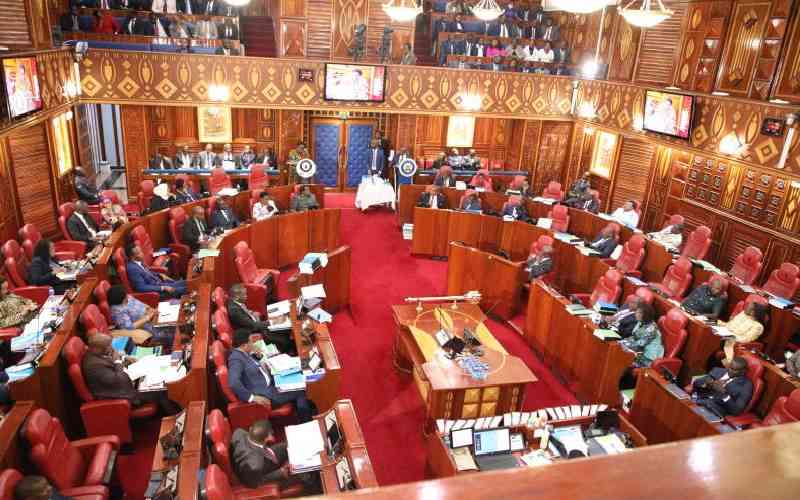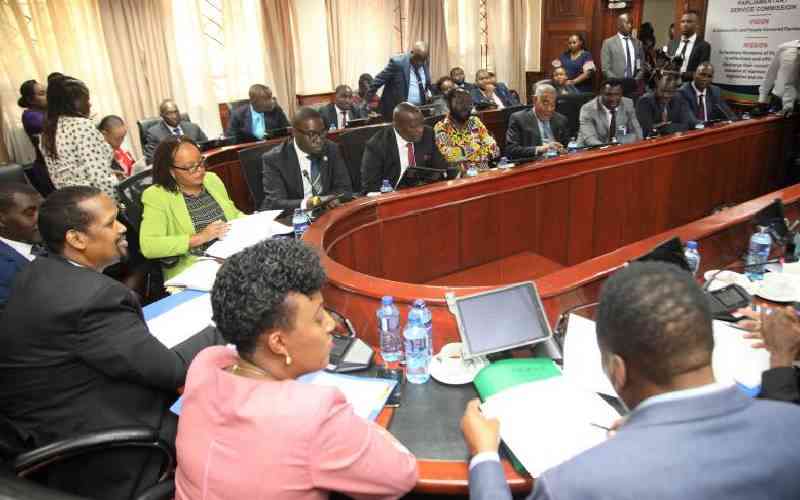In the run up to the 2013 General Election, the World Bank warned of the "risk" of investing more in areas hitherto undeveloped as the country readied itself for devolution.
In 'Devolution without disruption: Pathway to successful new Kenya' the World Bank cynically recommended that devolution ought to be gradual and areas that previously enjoyed massive State funding should continue getting such support.
And that a gradual Affirmative Action for the less endowed should be put in place.
The argument was that the poorer counties need comparatively less cash than richer counties simply because the capacity of the marginalised counties to absorb the funds was limited.
The thinking probably was that any monies thrown at places like Wajir or Garrisa, Turkana, West Pokot was akin to a drop of water in a sea of poverty.
How wrong they were!
Whereas the mantra of putting money where there is money, holds true, devolution is proving a disruptive phenomenon in Kenya.
The Kenya Public Expenditure Review (PER) World Bank report released last week makes for sober reading. It is encouraging how the World Bank has made a 360 degrees about-turn on the matter.
Yet despite that, Decision Time: Spend More or Spend Smart confirms the long-held view that devolution is creating a wave of development in the counties.
It has also disapproved the theory that the previously "privileged counties" have capacity to efficiently deliver services.
The two leading counties that have exhibited smart spending (Wajir and Turkana) are from the poor arid and semi-arid regions of the country. These two spent more than half of their annual budget in 2013/14 on development.
Others like Uasin Gishu, Embu, Kisumu and Mombasa spent between 3-12 per cent on development.
It is not wishful thinking to imagine that counties in the countryside have a fair chance to leapfrog the likes of Nairobi and Mombasa characterised by pollution, choking traffic, over-population, crime and other vices in the not so distant future.
There is no denying that across the country, citizens can score their county governments as successes, average performers or utter failures. There is promise in so many of them.
For some, government has never been so close in their lives. The benefits accruing from this is perhaps 10-fold because decision-making and planning is so near they can feel it. They decide and own the decisions they make. That is god-send because performance can be gauged.
Stay informed. Subscribe to our newsletter
Many, especially in poor areas can see a facelift in their surrounding that would have taken years to achieve in the former centralised system. Sound development projects have been initiated that have direct and immediate impact on their lives because the leaders now live near them and know their problems and their joys as well.
It is not easy to ignore the obvious excesses manifested in the razzmatazz and ceremony of a governor's coterie and a newly acquired convoy. This was expected, but it has faded off like all fads.
The designers of the devolution meant it to succeed. It will succeed.
And by all means, many agree that slowly and surely, things are changing for the better at the grassroots. In health, education and general infrastructure like roads.
In many ways as the report has indicated, devolution is a good thing and everyone should embrace it. It has its share of teething problems. That should not be the reason to breed cynicism.
In truth, the positives of a devolved system far much outweigh the negatives and that is why it needs support from everyone.
There is so much to celebrate because of what it portends.
The report unfortunately does not explain ways to resolve the complex challenges counties face to balance their budgets. The fact that many counties inherited relatively a larger number of employees from the national government is not the making of the county governments. And could explain the skewed spending in recurrent expenditure as opposed to development.
In addition, many of the counties have committed their funds and the projects are ongoing. Was this factored in the report?
It also assumes that the haves and have-nots were starting from the same point in the race.
For example, a county like Nairobi and Elgeyo Marakwet are incomparable. Nairobi has hundreds of kilometres of tarmacked roads.
In Elgeyo Marakwet, the locals have not seen tarmacked road other than the one linking it to Uasin Gishu and Baringo and therefore the expenditure from the two would obviously be at variance.
All in all, the report holds a mirror to the counties. Many will like what they see, a few will groan.
 The Standard Group Plc is a
multi-media organization with investments in media platforms spanning newspaper
print operations, television, radio broadcasting, digital and online services. The
Standard Group is recognized as a leading multi-media house in Kenya with a key
influence in matters of national and international interest.
The Standard Group Plc is a
multi-media organization with investments in media platforms spanning newspaper
print operations, television, radio broadcasting, digital and online services. The
Standard Group is recognized as a leading multi-media house in Kenya with a key
influence in matters of national and international interest.
 The Standard Group Plc is a
multi-media organization with investments in media platforms spanning newspaper
print operations, television, radio broadcasting, digital and online services. The
Standard Group is recognized as a leading multi-media house in Kenya with a key
influence in matters of national and international interest.
The Standard Group Plc is a
multi-media organization with investments in media platforms spanning newspaper
print operations, television, radio broadcasting, digital and online services. The
Standard Group is recognized as a leading multi-media house in Kenya with a key
influence in matters of national and international interest.








